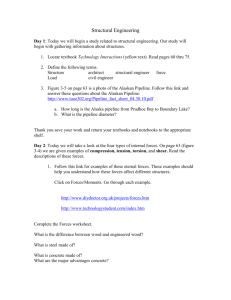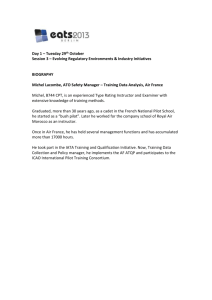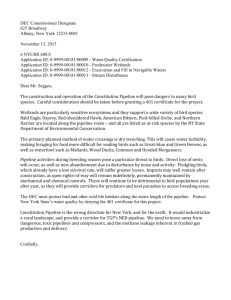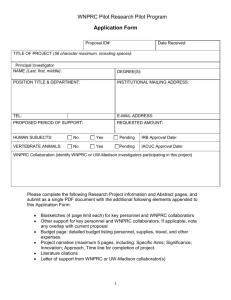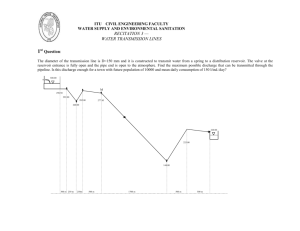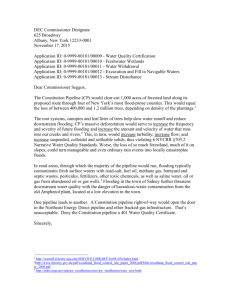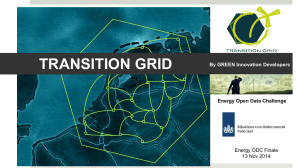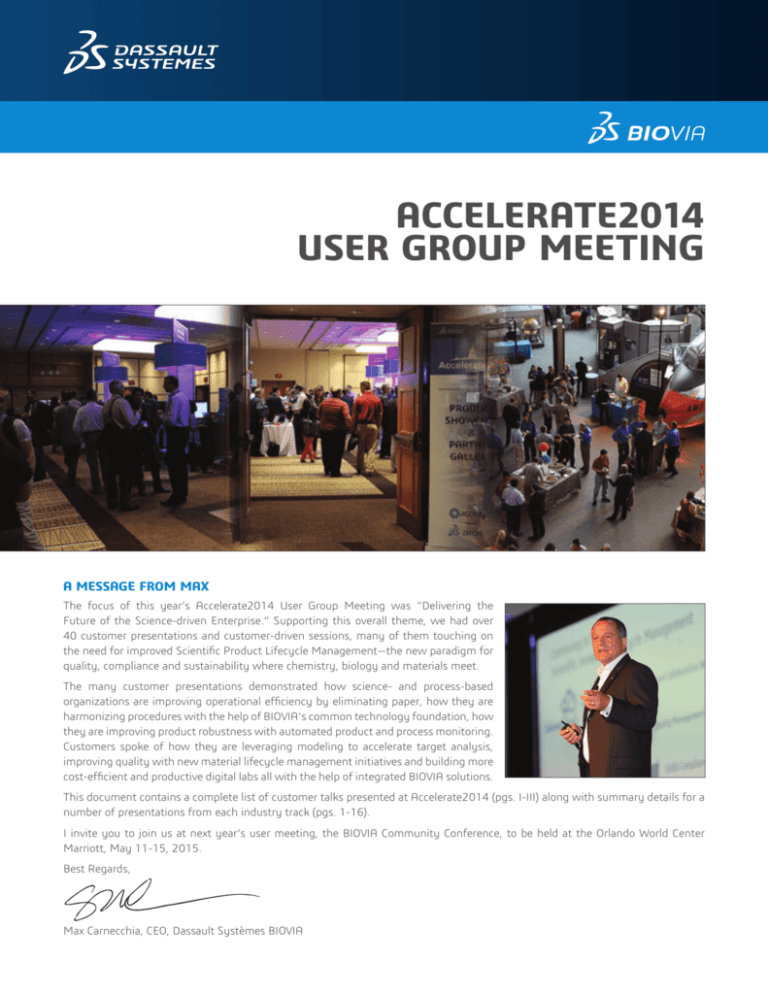
ACCELERATE2014
USER GROUP MEETING
A MESSAGE FROM MAX
The focus of this year’s Accelerate2014 User Group Meeting was “Delivering the
Future of the Science-driven Enterprise.” Supporting this overall theme, we had over
40 customer presentations and customer-driven sessions, many of them touching on
the need for improved Scientific Product Lifecycle Management—the new paradigm for
quality, compliance and sustainability where chemistry, biology and materials meet.
The many customer presentations demonstrated how science- and process-based
organizations are improving operational efficiency by eliminating paper, how they are
harmonizing procedures with the help of BIOVIA’s common technology foundation, how
they are improving product robustness with automated product and process monitoring.
Customers spoke of how they are leveraging modeling to accelerate target analysis,
improving quality with new material lifecycle management initiatives and building more
cost-efficient and productive digital labs all with the help of integrated BIOVIA solutions.
This document contains a complete list of customer talks presented at Accelerate2014 (pgs. I-III) along with summary details for a
number of presentations from each industry track (pgs. 1-16).
I invite you to join us at next year’s user meeting, the BIOVIA Community Conference, to be held at the Orlando World Center
Marriott, May 11-15, 2015.
Best Regards,
Max Carnecchia, CEO, Dassault Systèmes BIOVIA
ACCELERATE2014 USER GROUP MEETING CUSTOMER PRESENTATIONS
Track 1: Process Management and Compliance
Manufacturing Informatics Technology and Implementation
Baxter Bioscience
BIOVIA Discoverant Server Performance Monitoring
Customer-Specific Applications in Product Development
Johnson & Johnson
BIOVIA Enterprise Lab Notebook Enables a Flexible Recipe-based
Data Capture Strategy for Development
Pfizer
Meta Data and the Quest for Understanding: Utilizing BIOVIA
Pipeline Pilot to Aggregate Notebook Content
Customer-Specific Applications in QA/QC
Amgen
Integrating BIOVIA Products into Quality Control Labs
Perrigo
Where Are We Two Years Later? Post-deployment Review of the LES
Integration of Labinformatics Solutions for QA/QC
PPD
Utilization of Inventory Manager in a CRO Environment
Integration of BIOVIA and Third-party Solutions for Product Development
Johnson & Johnson Support for Data Management and Automation Needs in
Pharmaceutical Development
Pfizer
Faster, Easier and Ways to Prove It. Enhanced Experiments for Users,
with Better Compliance and Data Mining for the ELN Administrator
Manufacturing Informatics for Process Development
BMS
Product Robustness at Bristol-Myers Squibb
BMS
BIOVIA Discoverant as an Intelligence System for Pharmaceutical
Development
Previewing the Future of Manufacturing Informatics
Biogen Idec
Expanding the Usage of BIOVIA Discoverant into New Application
Areas at biogen Idec: Driving Business Value in Supply Chain Operations and Commercialization of Biosimilars
Track 2: Life Science Research
Efficient Small Molecule Drug Design
Pfizer
Relative Free Energy Methods in Drug Discovery: Evaluation and
Recommendations
Vitae Pharma
Contour® Growth Algorithm Builds Novel Drug-like Molecules in the
Context of Protein Binding Site
Pipeline Pilot for Personal Productivity
Dupont
Improving the Effectiveness of Our R&D Organizations through
Incrementally-enhanced Informatics
Eisai
With and Without the Magic: Leveraging Different Facets of Chemical
Handling for Migration of BIOVIA ELN Data
Informatics Solutions for Biologics and Biotherapeutics Discovery
AbbVie
Biologics Registration at AbbVie: Analysis and Future Approach
Takeda Pharma
Building a Highly Effective and Flexible Biomolecules Management
Platform
I
Discovery Cheminformatics
Genentech, Inc.
Deploying the BIOVIA Enterprise Lab Notebook at Genentech:
Lessons Learned
Merck
Enabling Library Design with BIOVIA Pipeline Pilot and ALDaS
Roche
Serious Landscaping: Chemistry Platform Migration at Roche
Accelerating Biotherapeutic Drugs to Market
Pfizer
Case Studies of the Contribution of Modeling in Drug Development: Target Analysis and Lead Humanization
Putting the ‘O’ back into Chemoinformatics – BIOVIA Pipeline Pilot
Merck
Workbenches Play a Key Role in Developing and delivering Expert
Analysis
Track 3: Chemicals, CPG, Food & Beverage, Materials
Laboratory and Experiment Management
Colgate-Palmolive
Digital Lab of the Future at Colgate Palmolive
Gilead
Using BIOVIA Pipeline Pilot to Extract BIOVIA Notebook Data
Predictive Materials Science
Air Products
Computational Chemistry for Industrial Product and Process
Development Support
Dupont
Thermochemical Design for Chemical and Materials Engineering
Whirlpool
Multi-scale Simulation of Cellulose Surface Detergency Process
Chemical and Materials Management
AkzoNobel
How AkzoNobel Is Using BIOVIA CISPro Live to Address Corporate
Requirements for Lab Safety and Chemical Inventory Management
Dow Chemical
Global Implementation of the CISPro Chemical Inventory System at
the Dow Chemical company
Procter & Gamble
The Evolution of a Holistic Material Lifecycle Management Process
Integrating the Scientific Laboratory
Genentech
Capturing Chemistry from Collaborators
II
SELECTED CUSTOMER PRESENTATIONS
Baxter Bioscience
BIOVIA Discoverant Server Performance Monitoring.................................................................1
Pfizer
Meta Data and the Quest for Understanding: Utilizing.............................................................2
BIOVIA Pipeline Pilot to Aggregate Notebook Content
Amgen
Integrating BIOVIA Products into Quality...................................................................................3
Control Labs
Perrigo
Where Are We Two Years Later? Post-deployment...................................................................4
Review of the LES
Bristol-Myers Squibb
Product Robustness at Bristol-Myers Squibb.............................................................................5
Biogen Idec
Expanding the Usage of BIOVIA Discoverant into New.............................................................6
Application Areas at Biogen Idec: Driving BusinessValue in
Supply Chain Operations and Commercialization of Biosimilars
Vitae Pharma
Contour® Growth Algorithm Builds Novel Drug-like Molecules................................................7
in the Context of Protein Binding Site
AbbVie
Biologics Registration at AbbVie: Analysis and Future Approach.............................................8
Takeda Pharma
Building a Highly Effective and Flexible Biomolecules..............................................................9
Management Platform
Genentech, Inc.
Deploying the BIOVIA Enterprise Lab Notebook at.................................................................10
Genentech: Lessons Learned
Merck
Enabling Library Design with BIOVIA Pipeline Pilot and ALDaS................................................11
Colgate-Palmolive
Digital Lab of the Future at Colgate Palmolive........................................................................12
Whirlpool
Multi-scale Simulation of Cellulose Surface Detergency Process...........................................13
AkzoNobel
How AkzoNobel Is Using BIOVIA CISPro Live to Address.......................................................14
Corporate Requirements for Lab Safety and Chemical Inventory
Management
Dow Chemical
Global Implementation of the BIOVIA CISPro Chemical Inventory.............................................15
System at the Dow Chemical company
Procter & Gamble
The Evolution of a Holistic Material Lifecycle...........................................................................16
Management Process
III
BAXTER BIOSCIENCE
DISCOVERANT SERVER PERFORMANCE MONITORING
Steve Kane, Manager Information Systems, BioAnalytics Program, Baxter Bioscience
Abstract: This presentation demonstrates how Baxter is using standard server performance
data and a Discoverant hierarchy to monitor server and application performance. This capability
allows Baxter to detect actual and potential performance issues, proactively plan server upgrades,
identify bottlenecks and maintain service levels.
Summary: Baxter’s BioAnalytics Program is a global system initiative to provide access to all
manufacturing data including process control systems, in-line device recordings, laboratory
results, manufacturing execution data and other batch record data for eight worldwide sites. More
than 10,000 parameters are mapped for process monitoring and/or investigational purposes with
more than ten active BIOVIA Discoverant hierarchies and more than 500 active users.
Representative Slides:
1
PFIZER
METADATA AND THE QUEST FOR UNDERSTANDING: UTILIZING BIOVIA PIPELINE
PILOT TO AGGREGATE NOTEBOOK CONTENT
Robert Wade, Research Fellow, Pfizer and Bryan Van Vliet, Director,
Software Services, Consulting Services, BIOVIA
Abstract: The initial push beyond the ‘paper on glass’ paradigm for electronic notebooks
requires at a minimum definitive metadata classification for each experiment entry. In the
PharmaTherapeutics Division of R&D at Pfizer we have created such classifications that draw on
authoritative sources. We have partnered with BIOVIA to leverage BIOVIA Pipeline Pilot and the
Notebook IDS to create a powerful multi-dimensional experiment exploration and categorization
tool. This presentation describes some of the methodology and highlights of the tool.
Summary: Leveraging BIOVIA Pipeline Pilot to aggregate notebook content and metadata
classifications for experiment entries, Pfizer has created a powerful, easy-to-use tool for drilling
down into notebook data. The tool enables lab managers to quickly determine how compliant
scientists are in their documentation, who is characterizing the new reference standard, what
solvents were used throughout a project and other critical parameters. Ultimately, the tool is
moving Pfizer from tactical, reactive, artifact-driven science to more strategic, information-driven
science.
Representative Slides:
2
AMGEN
INTEGRATING BIOVIA PRODUCTS INTO QUALITY CONTROL LABS
Bruce Grieshaber, Director QC, Amgen; Sachin Sontakke, Senior Manager IS, Amgen
Abstract: The presentation begins by explaining Amgen’s implementation of BIOVIA Laboratory
Execution System (LES) and BIOVIA Inventory Management (IM) including the benefits and
lessons learned. The discussion continues with Amgen’s enhancement plan for the architecture
with a move from a site-based implementation to a regional model. Improvements in BIOVIA
LES method building process with the use of parameters stored in BIOVIA IM are covered. The
presentation concludes with some ideas for using BIOVIA Pipeline Pilot as a tool to integrate
Amgen’s quality and management systems.
Summary: A BIOVIA LES and BIOVIA IM deployment strategy that that enables full proficiency
within the lab requires a careful definition of the data model for storing specifications, in-process
control limits, test results and test data. It is also important to ensure that electronic procedures
align with reporting requirements. Carefully evaluate the resource skillset prior to assigning
method building tasks. Define the instrument standards to reduce rework in parsing and
registration—and know up front if you are working towards a regional or site deployment of
BIOVIA LES/IM software.
Representative Slides:
3
PERRIGO
WHERE ARE WE TWO YEARS LATER? POST-DEPLOYMENT REVIEW OF THE BIOVIA LES
Deb Baker, QC Informatics Supervisor, Perrigo;
David Redding, QC Informatics Team Leader, Perrigo
Abstract: Perrigo Company plc, headquartered in Ireland, has grown to become a leading global
healthcare supplier and is continually striving to fulfill the company’s mission, “To meet the
world’s growing need for quality, affordable healthcare.” In order to support this vision, Perrigo
has strategic goals that focus on both compliance and cost control. Perrigo Company is currently
using the BIOVIA Laboratory Execution System (LES) and BIOVIA Inventory Management (IM)
at our Allegan, Michigan site. We expect to “Go Live” by fall with the BIOVIA ELN in our AR&D
lab in Michigan and BIOVIA LES at our New York site and we recently kicked off an BIOVIA LES
implementation project at our Israel site. This presentation focuses on the benefits of our BIOVIA
LES deployment two years after implementation at our Michigan site and the challenges we faced
when implementing across multiple value streams and labs.
Summary: Perrigo has observed numerous benefits resulting from the implementation of
BIOVIA LES and BIOVIA IM over a period of 18 months. The software makes it easy to enforce
consistency in testing and documentation practices, even across multiple laboratories. Ninety-six
percent of analysts prefer BIOVIA LES to the previous paper system. Eight-eight percent report
improved data recording. Written procedures have greatly reduced analyst errors, and compliance
is improved with data and metadata now collected and recorded in real time. Most importantly,
analysts spend more time testing now less time correcting errors.
Representative Slides:
4
BRISTOL-MYERS SQUIBB
PRODUCT ROBUSTNESS AT BRISTOL-MYERS SQUIBB
Gary Steeves, Manager, Biologics Process Robustness: GMS-IT, Bristol-Myers
Squibb; Dan Wasser, Associate Director, Global Manufacturing and Supply IT,
Bristol-Myers Squibb
Abstract: Product Robustness within Bristol-Myers Squibb is a program that continually seeks to
reduce variability in our manufacturing processes, products and supply with the ultimate goal of
manufacturing sites with no investigations and no recalls. Global Manufacturing and Supply IT
designs and deploys data systems and analytical tools to support this program. This talk shares
Bristol-Myers Squibb’s progress to date and covers the company’s analytical goals, some of the
technical solutions they have deployed (including Discoverant) and the challenges they have
encountered.
Summary: Product robustness is the ability of a process to demonstrate acceptable quality and
performance while tolerating input variability. Process monitoring, process understanding and
process verification constitute a strategic imperative at Bristol-Myers Squibb. BIOVIA Discoverant
is a key component of their process and product robustness toolkit, automating process
monitoring, providing trend alerts, supporting investigations and accelerating the preparation of
annual product quality reviews (APQRs). Biologics hierarchies in BIOVIA Discoverant include 8004,500 parameters that are monitored daily to reduce variability in processes, products and supply.
Representative Slides:
5
BIOGEN IDEC
EXPANDING THE USAGE OF BIOVIA DISCOVERANT INTO NEW APPLICATION
AREAS AT BIOGEN IDEC: DRIVING BUSINESS VALUE IN SUPPLY CHAIN
OPERATIONS AND COMMERCIALIZATION OF BIOSIMILARS
Yvonne Ledford, Data Acquisition and Analytics Program Lead, Biogen Idec
Abstract: This presentation provides an overview of Biogen Idec’s efforts to expand the usage
of BIOVIA Discoverant and centralized data management into new application areas driving the
business value across the supply chain, along with streamlining the commercialization process for
biosimilars. The presentation focuses on the benefits, challenges and methodologies associated
with leveraging Biogen Idec’s data and process analytics excellence across business lines.
Summary: Benefits of BIOVIA Discoverant for biosimilar manufacturing include ease of use and
low-cost, rapid hierarchy roll-outs. With the hierarchy following the process flow, there is no
need for lot tracking across steps. The system lays the groundwork for future hierarchy updates
and removes the need for routine trending tools until a process moves to the validation phase.
The ability to share data via limited access permissions makes it possible to give partners and
CMOs limited hierarchy views. With BIOVIA Discoverant, pharma manufacturing organizations
can expand systematic data acquisition, consistent data availability and sophisticated informatics
across the supply chain.
Representative Slides:
6
VITAE PHARMACEUTICALS
CONTOUR® GROWTH ALGORITHM BUILDS NOVEL DRUG-LIKE
MOLECULES IN THE CONTEXT OF PROTEIN BINDING SITE
Suresh Singh, Senior Director, Vitae Pharma
Abstract: Contour® is a structure-based drug design technology that comprises a contextperceptive growth algorithm and a contact-sensitive scoring function. A flexible and programmable
growth engine creates drug-like molecules by assembling fragments in the context of protein
binding pockets. The context sensitive algorithm is designed to generate novel molecules that
naturally complement hydrophilic and hydrophobic features of the protein binding site through
its dynamic growth features. At each stage of the growth process the local binding site features
are dynamically mapped, and these features pick high ranking fragments and attach them in
the best direction(s) to grow. Once the fragments are assembled in the binding site, growth
algorithm scans fragment atoms that are in contact with the protein atoms in the binding site
and dynamically mutate select atoms into complementary hetero atoms. Thus these features
generate molecules that best complement the shape and the features of protein binding sites.
These improvements have significantly enhanced the growth rate up to 10 times over the
previous version of the growth algorithm, and raised the average score of molecules generated by
about 1 log unit. We demonstrate these features with application to renin, 11b-HSD1 and LXR.
Summary: Contour® technology was used to discover a new scaffold for inhibition of 11b-HSD1
and to guide optimization of potency and other properties. The software was used in virtual
screening mode to discover a potent 11b-HSD1 inhibitor which was rapidly optimized to a singledigit nanomolar compound. The technology was instrumental in discovering clinical candidates
for BACE1, LXRb agonists and RORginverse agonists. Contour technology is integrated into
BIOVIA Discovery Studio for the front-end and BIOVIA Pipeline Pilot protocols for the back-end.
Representative Slides:
7
ABBVIE
BIOLOGICS REGISTRATION AT ABBVIE: ANALYSIS AND FUTURE APPROACH
Randy Metzger, Senior Informatics Scientist,
Platform Informatics and Knowledge Management, AbbVie
Abstract: AbbVie utilizes the BIOVIA Biological Registration (BioReg) System as its global
enterprise software for registration of biologics materials throughout drug discovery. AbbVie was
an original participant in the collaborative special interest group that helped to guide the creation
of the initial release of BIOVIA BioReg. Since its early adoption, BIOVIA BioReg has become a
central component for managing and integrating the information surrounding AbbVie’s biologicsbased drug discovery efforts. Integration of BIOVIA BioReg has successfully enabled mapping
of experimental data in multiple systems to the identifying information of biological entities,
providing a wider breadth of knowledge management in the biologics space. Recently AbbVie has
embarked on an in-depth analysis of its current biologics registration practices and philosophies,
and has identified structural areas where the integrity of Concept information and relationships
between Concepts may be improved. This talk describes reconfiguration of BIOVIA BioReg to
implement a new model for managing information and relationships, and a new model of virtual
Concept registration.
Summary: The reconfiguration of BIOVIA BioReg has addressed AbbVie business needs by
providing consistent Concept-level metadata among all lots and allowing for direct Concept
relationships and virtual registration of Concepts. Simpler, state-based rules have improved
stability, intuitiveness and the ability to test software. Simplified entity definitions allow greater
flexibility in adding new entity subtypes and ability for post-registration editing of entity subtype
classifications. The new user interface enables more accurate and consistent data entry workflows
to meet Abbvie needs, including improved bulk registration. Data cleanup has enhanced data
consistency and stability.
Representative Slides:
8
TAKEDA PHARMACEUTICALS
BUILDING A HIGHLY EFFECTIVE AND FLEXIBLE
BIOMOLECULES MANAGEMENT PLATFORM
Monica Wang, Lead System Engineer, Project and
Program Manager, R&D Systems, Takeda Pharmaceuticals
Abstract: Building a comprehensive Biomolecules Management Platform is a very challenging
task since there are many categories of biomolecular entities (e.g., cell lines, plasmids, proteins,
antibody conjugates, etc.), each with vastly diverse properties and complicated relationships. We
are building an enterprise solution to track individual biomolecules in different drug development
workflows and visualize their relationships. This platform will improve user efficiency, data
quality, data exchange and collaboration for both research and pre-clinical development
departments across multiple R&D sites at Takeda.
Summary: A pilot project assessing BIOVIA BioReg as a general-purpose system for registering
biological assets and their relationships satisfied Takeda’s requirements for single and batch
biomolecule registration with easy entity configuration, entity relationship visualization, support
for developing and optimizing antibody drug conjugates (ADCs), flexible searching and inventory
tracking (made possible by a BIOVIA Pipeline Pilot application seamlessly integrated with BioReg).
Representative Slides:
9
GENENTECH
DEPLOYING THE ACCELRYS (BIOVIA) ELN AT GENENTECH: LESSONS LEARNED
Hao Zheng, Computational Chemist, Genentech, Inc.
Abstract: Today Electronic Laboratory Notebooks (ELNs) play an important role in a scientist’s
workflow. They have become more than a replacement for the paper lab notebooks. They are an
essential application for improving the efficiency of capturing and sharing information. Within
medicinal chemistry, for example, the BIOVIA ELN can be integrated with other chemistry
processes such as compound registration, analytical analysis and working with collaborators. This
presentation discusses how the BIOVIA Notebook is deployed within the medicinal and process
chemistry departments at Genentech. The presentation also describes several integrations
Genentech has implemented to help chemists improve their workflows.
Summary: In deploying the BIOVIA ELN within their medicinal, early lead, process and analytical
chemistry groups, Genentech learned how important it is to identify must-have features early
in the program. It is also critical to test performance and stability using large amounts of real
data…and pay close attention to the different priorities and workflows of chemists working in
different areas. Use many pilot teams, chose the team members carefully and focus on their most
frequently used tasks. Finally, since most documents are created using cloning, cloning a reaction
needs to be an intuitive process.
Representative Slides:
10
MERCK
ENABLING LIBRARY DESIGN WITH PIPELINE PILOT AND ALDaS
Scott Harrison, Associate Principal Scientist, Cheminformatics, Merck
Abstract: Chemists specializing in the design and synthesis of small molecule libraries typically
have cheminformatics requirements above and beyond those doing “traditional” medicinal
chemistry. Over the past 15 years, Merck has leaned on BIOVIA Pipeline Pilot as a means to
quickly develop and deploy library workflow tools that have enabled library approaches within
medicinal chemistry programs. The first part of this talk highlights the evolution of those tools
from rudimentary protocols to increasingly complex design tools. The second part of the talk
showcases the Automated Library Design and Synthesis (ALDaS) platform currently under
development by BIOVIA in partnership with Merck.
Summary: Library tools at Merck have evolved from entirely manual, spreadsheet-based
solutions requiring expertise and experience to BIOVIA Pipeline Pilot-based tools simplifying file
manipulation and editing that have lowered the barrier to entry for novice chemists. The migration
of these tools to BIOVIA Pipeline Pilot webport has increased in-line help text support, eliminated
file editing and further lowered the barrier for novice chemists. For example, enumeration in the
Pipeline Pilot webport provides integration with QC, Purification and compound registration,
while eliminating spreadsheet manipulation of data files. Custom BIOVIA Pipeline Pilot workflows
for high-throughput purification use Oracle tables to track fractions in barcoded vials and racks,
giving the chemist complete visibility into this process. A BIOVIA Experiment Knowledge Base
(EKB) solution for high-throughput purification is currently being tested and deployed.
Representative Slides:
11
COLGATE-PALMOLIVE
DIGITAL LAB OF THE FUTURE AT COLGATE-PALMOLIVE
Robyn Mandalakis, Director PLM, Global Development, Colgate-Palmolive
Abstract: This talk focuses on Colgate Palmolive’s overall Product Lifecycle Management strategy
and tools, and their digital laboratory vision, roadmap and progress to date.
Summary: By carefully planning and aligning internally and with partners, Colgate-Palmolive is
leveraging BIOVIA Electronic Lab Notebook (ELN), BIOVIA Work Request and BIOVIA Pipeline Pilot
to provide quick and easy access to relevant people, knowledge and information in the Digital
Lab. They started by getting to know their user groups. Now they are deploying flexible and agile
ELNs for their R&D, microbiology and flavor/fragrance groups with a strong focus on tracking
utilization, measuring success and celebrating success. They are also reducing “busy” work by
importing equipment, materials and preparations used in one experiment into new experiments
and by allowing scientists to clone sections or entire experiments into new experiments. It’s all
about getting information easily into the BIOVIA ELN.
Representative Slides:
12
WHIRLPOOL
MULTI-SCALE SIMULATION OF CELLULOSE SURFACE DETERGENCY PROCESS
Mir Quddus, Senior Engineer, Whirlpool
Abstract: Textile surfaces are exposed to environmental and human contamination. These
contaminants adhere onto the surface through physiochemical forces. Aqueous detergency
process involves usage of water and detergents to remove these contaminants from the cellulose
surface. Although much published literature exists pertaining to experimental studies on
detergency process, only a few studies address multi-scale phenomena. This study focuses on the
atomistic nature of cellulose surface soiling and the meso-scale approach to detergency. We use
the commonly used cellulose surface as a substrate and oil to represent human contamination.
Our results indicate that reduction of surface tension by the surfactant molecules occurs
through selective adsorption on the cellulose surface and oil-cellulose interface. The detergency
progressed with the reduction of van der Waals forces between oil molecules and cellulose. The
surface tension values obtained from this simulation were correlated with experimental values.
This study also finds interesting micelle shape transition due to increase in system temperature.
Summary: Multi-scale simulation using BIOVIA Materials Studio helps Whirlpool decode the
understanding of material properties at various levels. For example, Whirlpool researchers
demonstrated that oil adhesion on a cellulose surface depends on surface roughness and
accessibility of OH-groups. Oil film and oil droplet wetting on a cellulose surface increases with
longer alkane chains. Increased bulk flow shearing speeds the removal of oil droplets from a
cellulose surface and increased surfactant concentration promotes larger micelle formation.
Representative Slides:
13
AKZONOBEL
HOW AKZONOBEL IS USING BIOVIA CISPRO TO ADDRESS CORPORATE
REQUIREMENTS FOR LAB SAFETY AND CHEMICAL INVENTORY MANAGEMENT
Jennifer Hergert, HSE Manager, Surface Chemistry RDI, AkzoNobel
Abstract: AkzoNobel uses BIOVIA CISPro Cloud in several different labs at different sites
throughout the United States. This presentation discusses the experience of one of those labs in
implementing BIOVIA CISPro Cloud, how we are using the system and how it is addressing our
corporate requirements for lab safety and chemical inventory management.
Summary: AkzoNobel, a leading global supplier of specialty surfactants and polymers, implemented
the BIOVIA CISPro Cloud chemical inventory management system at their Strongsville, Ohio
R&D facility in 2012 and at Bridgewater, NJ in 2013. BIOVIA CISPro is meeting AkzoNobel’s
Laboratory Safety Standard by providing a complete, up-to-date substance register with
appropriate substance hazard information (Safety Data Sheets) and support for annual inventory
audits, container labeling, storage and disposal in accordance with regulatory requirements.
BIOVIA CISPro is also being deployed at other R&D facilities across different AkzoNobel Business
Units including a site at Brewster, NY (currently in process).
Representative Slides:
14
THE DOW CHEMICAL COMPANY
GLOBAL IMPLEMENTATION OF THE BIOVIA CISPRO CHEMICAL INVENTORY
SYSTEM AT THE DOW CHEMICAL COMPANY
Matt Whaley, Associate Research Scientist, The Dow Chemical Company
Abstract: In 2013, The Dow Chemical Company began a pilot of the CISPro chemical inventory
system within a single building in Midland, MI. A year later, this system is being rolled out to sites
across the globe with an emphasis on its use to improve safety, regulatory compliance and cost
saving. This presentation describes the drivers for the implementation of a globally standardized
inventory system, the challenges of using such a system across multiple geographies with
different languages and regulatory issues and the workflow changes and efficiency improvements
that have already been felt by researchers in the laboratory.
Summary: Dow’s safety culture is part of everything they do and every decision they make.
They selected BIOVIA CISPro because it is an industry-standard chemical inventory system
that offers definable user properties and strong generational tracking with no server cost. By
offering a readily accessible, up-to-date inventory of commercial reagents, ready access to hazard
information and improved handling of regulated materials, BIOVIA CISPro has reduced time spent
on reporting so more time can be spent on ensuring practical, everyday lab safety.
Representative Slides:
15
PROCTER & GAMBLE
THE EVOLUTION OF A HOLISTIC MATERIAL LIFECYCLE MANAGEMENT PROCESS
Tom Lillie, Section Manager – Procter & Gamble Digital Innovation Program,
Procter & Gamble
©2014 Dassault Systèmes. All rights reserved. 3DEXPERIENCE, the Compass icon and the 3DS logo, CATIA, SOLIDWORKS, ENOVIA, DELMIA, SIMULIA, GEOVIA, EXALEAD, 3D VIA, BIOVIA and NETVIBES are commercial trademarks
or registered trademarks of Dassault Systèmes or its subsidiaries in the U.S. and/or other countries. All other trademarks are owned by their respective owners. Use of any Dassault Systèmes or its subsidiaries trademarks is subject to their express written approval.
Abstract: Knowledge related to materials is the lifeblood of a product development organization.
However, materials are often managed in various ways by multiple functions that do not take
advantage of the synergies between their needs. Establishing a common core and work processes
across all material types including chemicals, components, finished products, packaging,
labels, supplies and equipment has been a key enabler for the overall innovation process. This
presentation highlights the challenges and benefits of moving from diverse site- and functionspecific material management capabilities to a standard global process.
Summary: Materials are the building blocks of P&G products. Since establishing an end-to-end
Material Lifecycle Management (MLM) process for handling starting materials, chemicals and
reagents, P&G has moved from 8 systems for managing material quality across 16 R&D technical
centers in 8 countries (2005) to a single system managing all aspects of materials across 20 R&D
centers in 9 countries (2014). With more than 90% of materials now in BIOVIA CISPro, they
have improved data quality through greater visibility into supplier changes and more accurate
inventory control. They are also operating more sustainably with fewer resources to manage and
better training. All in all, operating costs have been reduced by more than $15 million per year.
Representative Slides:
Our 3DEXPERIENCE Platform powers our brand applications, serving 12 industries, and provides a rich
portfolio of industry solution experiences.
Dassault Systèmes, the 3DEXPERIENCE Company, provides business and people with virtual universes to imagine sustainable innovations. Its world-leading
solutions transform the way products are designed, produced, and supported. Dassault Systèmes’ collaborative solutions foster social innovation, expanding
possibilities for the virtual world to improve the real world. The group brings value to over 170,000 customers of all sizes in all industries in more than 140
countries. For more information, visit www.3ds.com.
Dassault Systèmes Corporate
Dassault Systèmes
175 Wyman Street
Waltham, Massachusetts
02451-1223
USA
16
BIOVIA Corporate Americas
BIOVIA
5005 Wateridge Vista Drive,
San Diego, CA
92121
USA
BIOVIA Corporate Europe
BIOVIA
334 Cambridge Science Park,
Cambridge CB4 0WN
England
WP-7523-0914

